Are you tired of sending generic store-bought cards that lack personality? Look no further than stamping your own cards to create unique designs that showcase your creativity and thoughtfulness. With a variety of stamping techniques, cardstock options, and embellishments, the possibilities are endless for designing personalized cards that your loved ones will cherish.
- Stamping your own cards allows for customization and adds a personal touch.
- Essential tools for stamping include ink pads, stamping blocks, and various types of stamps.
- Cardstock selection is crucial for achieving professional-looking results.
- Embellishments like sequins and ribbons can enhance stamped designs.
- Stamping cards can serve as a therapeutic and fulfilling creative outlet.
Why Stamp Your Own Cards?
If you’re looking for a way to add a personal touch to your greeting cards, stamping is the perfect solution. Stamping allows you to customize your designs, add unique textures, and create a one-of-a-kind card that your recipient will cherish. Here are some reasons why you should consider stamping your own cards:
- Customization: When you stamp your own cards, you have complete creative control over the design and message. You can choose from a variety of stamps to create a unique design that reflects your style and personality.
- Personalization: Adding a personal touch to your cards can make all the difference. Stamp a sentiment or message onto your card to make your recipient feel special and loved.
- Savings: Store-bought greeting cards can be expensive, especially when you need to purchase multiple cards for various occasions. Stamping your own cards is a cost-effective way to create beautiful cards that look professional.
Ready to get started on your stamping journey? Let’s take a look at the essential tools you’ll need.
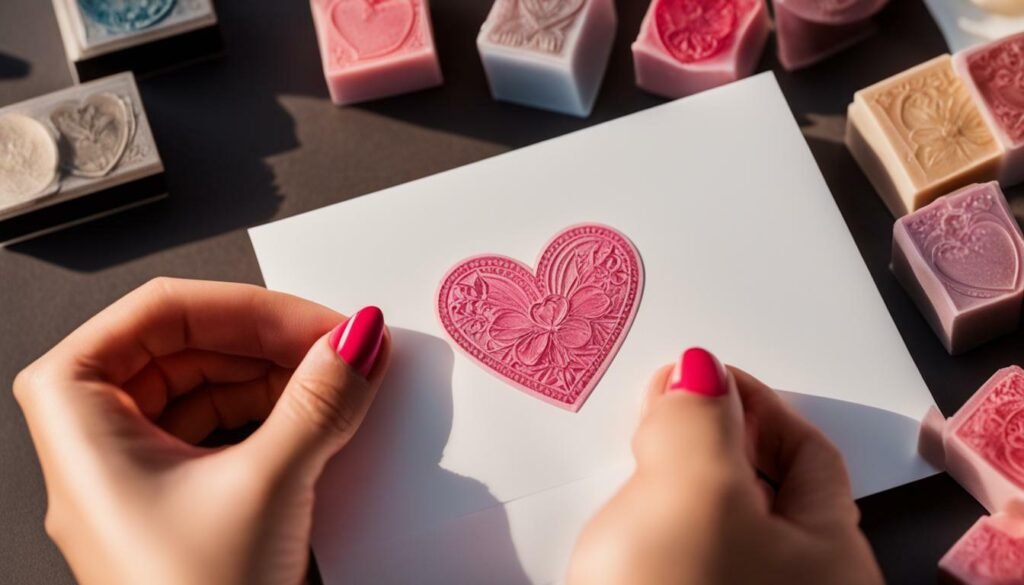
To create impressive stamped cards, you need a few essential stamping tools. Here are the must-have tools you should consider:
- Ink Pads: Choose the right color ink pads for your project. Water-based ink pads are best for beginners, while pigment ink pads are great for advanced stampers.
- Stamping Blocks: A stamping block is a clear block that you use to position your stamp correctly. You can use different sizes and shapes depending on the size and shape of your stamps.
- Stamps: You can choose from a variety of stamps such as clear stamps, cling stamps, and foam stamps. Clear stamps are great for beginners, while foam stamps are great for making bold impressions.
- Cleaning Tools: Stamps need to be cleaned properly to ensure longevity. Use stamp cleaner and a stamp scrubber to get rid of any ink residue that may damage your stamps.
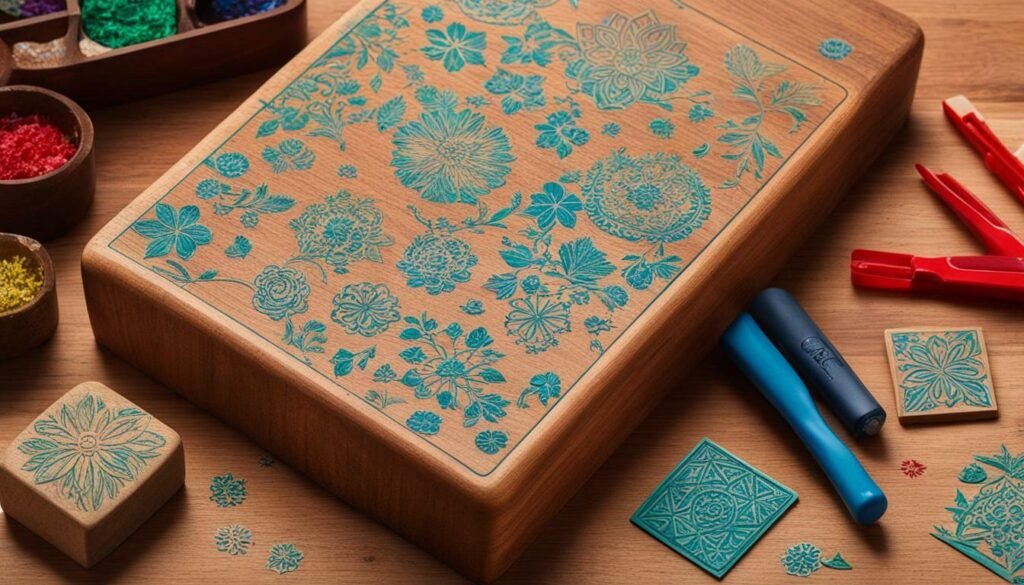
Having these essential stamping tools in your kit will ensure you can create beautiful stamped cards with ease.
Understanding Different Stamping Techniques
Stamping cards can be a fun and creative activity, especially when you mix and match different stamping techniques. Below are some of the popular stamping techniques that you can explore:
- Heat Embossing: This technique uses embossing powder and a heat gun to create raised, glossy images on your cards.
- Masking: This technique involves covering parts of your stamped design with a mask, allowing you to layer images and create a dimensional effect.
- Resist Stamping: This technique uses a resist ink and a regular ink to create a resist effect on certain parts of your card.
- Watercolor Stamping: This technique involves adding watercolor to your stamped images, creating a beautiful, subtle effect.
Experiment with these different stamping techniques to find the ones that work best for your card-making projects. Don’t be afraid to try new techniques and see what kind of creative results you can achieve!

When it comes to stamping cards, using the right type of cardstock is crucial to achieving a professional finish. Here are some factors to consider when selecting the best cardstock for stamping:
- Weight: Choose cardstock with a weight of at least 80 pounds to prevent ink from bleeding through the paper.
- Texture: Opt for a smooth, matte finish for clean and crisp stamp impressions. Textured cardstock can add interest and depth to your stamped designs.
- Color: White or ivory cardstock are classic choices for stamping, but you can also experiment with colored cardstock to add pops of color to your designs.
Remember to test your cardstock with your chosen stamps and ink to ensure the best results. With the right cardstock, your stamped cards will look polished and professional.

If you’re looking for a fun and creative way to add a personal touch to your stamped cards, why not try designing your own stamp patterns? With a little bit of imagination and the right materials, you can create custom designs that perfectly suit your style and preferences.
There are several materials you can use to design your own stamp patterns, including foam sheets, carving blocks, or rubber sheets. Once you’ve chosen your material, follow these steps:
- Sketch your design on paper, making sure to keep it simple and easy to cut or carve.
- Transfer your design onto your chosen material, using a pencil or pen to trace the outline.
- Cut or carve your design using scissors or carving tools, making sure to follow the outline carefully.
- Attach your design to an acrylic block or stamping tool using double-sided tape or other adhesive.
- Ink your stamp and test it on scrap paper to ensure that your design looks clean and crisp.
Designing your own stamp patterns is a great way to add a personal touch to your cards and unleash your creativity. Try experimenting with different materials and designs to see what works best for you.

Stamped backgrounds are a perfect way to add interest and texture to your cards. Here are some tips to help you create stunning stamped backgrounds:
- Choose a background stamp that fits your theme and color scheme.
- Use a stamping block to create even pressure and alignment.
- Experiment with different ink colors and techniques, such as blending or masking.
- Repeat the pattern for a cohesive look or use different stamps for a more eclectic design.
Here’s an example of a stamped background using the “Floral Garden” stamp set:
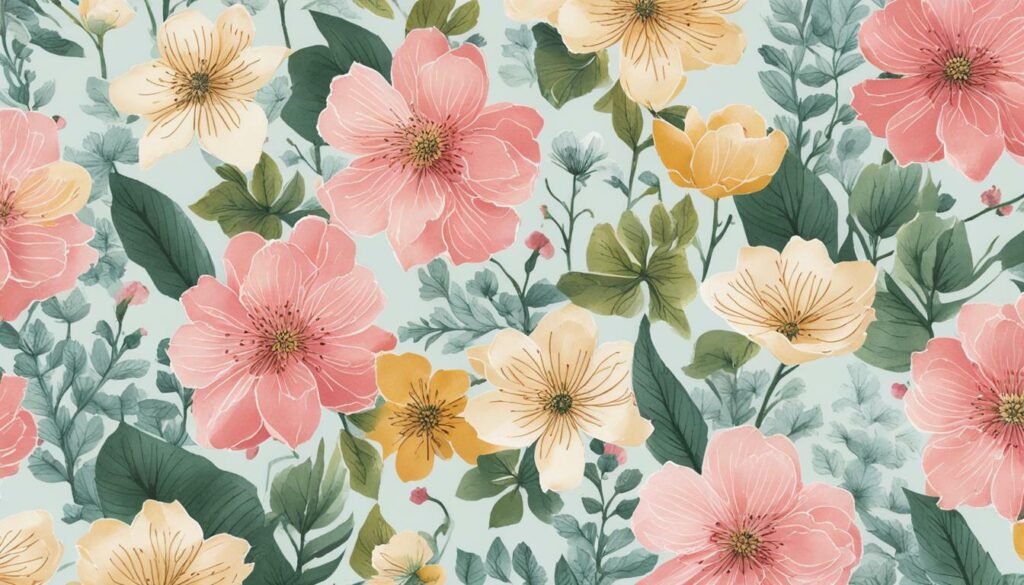
Hand lettering is a beautiful way to add a personal and artistic touch to your stamped cards. It allows you to customize your cards with unique lettering styles and add a personal message, making them truly one-of-a-kind.
To start incorporating hand lettering into your stamped cards, you will need a few basic tools such as a pen or brush and paper. You can then experiment with different lettering styles such as calligraphy, block letters, or cursive.
- Start with simple lettering styles and gradually work your way up to more complex designs.
- Practice your lettering on scrap paper before applying it to your card to ensure you are happy with the design.
- Consider using different colored pens or adding embellishments to your hand lettering to make it stand out.
By adding hand lettering to your stamped cards, you will create a personalized touch that is sure to impress your loved ones.

Embellishments are a great way to add depth and personality to your stamped cards, making them truly unique. Here are some ideas to get you started:
- Add a touch of sparkle with sequins or glitter.
- Use ribbon or twine to create borders or bows.
- Attach die-cut shapes or frames to your card, or layer different elements to create a 3D effect.
- Try adding texture with embossing powder, flocking, or dimensional paints.
- Use stickers or rub-ons to add a fun and playful element to your card.
Remember to choose embellishments that complement your stamped design, rather than overpowering it. Also, be careful not to overdo it – sometimes less is more!

Nothing is more frustrating than spending time on a beautiful stamped design only to have it come out smudged or blurry. With these tips for clean and crisp stamping, you’ll be able to achieve flawless results every time:
- Use the right amount of pressure when stamping. Too little pressure can result in a faint, incomplete image, while too much pressure can cause the ink to bleed or smudge.
- Ensure your stamp is properly inked by dabbing the ink pad onto the stamp evenly and avoiding over-inking, which can lead to smudging.
- Invest in high-quality, pigment-based ink pads, which provide better coverage and are less likely to smudge than dye-based inks.
- Clean your stamps thoroughly after each use with a stamp cleaner or mild soap and water, removing any excess ink or debris that can impact future stamping projects.
- Practice on scrap paper before stamping on your final project to ensure your stamp is properly inked and aligned.
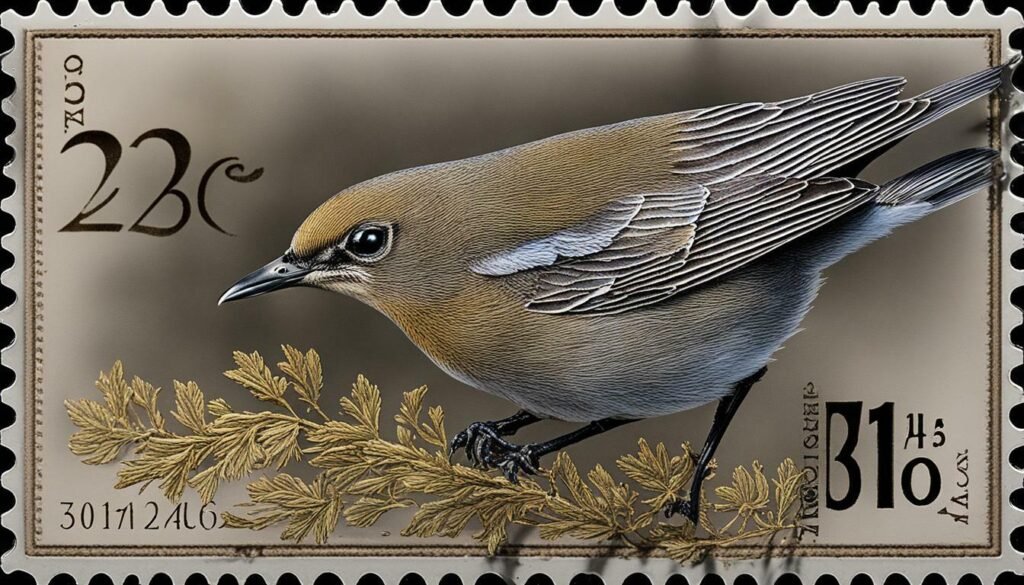
Take your stamping game to the next level by creating interactive cards that engage the recipient. Here are some ideas for incorporating interactivity into your stamped cards:
- Create a pop-up element by stamping an image or phrase on a separate piece of cardstock, cutting it out, and attaching it to the inside of the card with a folded tab.
- Make a slider card by cutting a track into the card and attaching a stamped element to a strip that moves back and forth along the track.
- Add a shaker element by stamping a design on a clear plastic sheet and filling it with sequins or other small embellishments, then attaching it to the card front with foam tape.
With a little bit of creativity and some basic stamping techniques, you can create beautiful and interactive cards that are sure to impress.

Combining stamped images with die-cut designs is an excellent way to take your card making to the next level. Here are some tips to help you create unique and intricate designs using stamped images and die-cuts:
- Choose a coordinating stamp and die set to ensure your images and designs match perfectly.
- Stamp your image onto cardstock and then use your die-cutting machine to create the shape you desire.
- Create a layered effect by stamping multiple images and using different sized dies to cut them out.
- Play with placement by experimenting with different colored cardstocks, patterned papers, and embellishments.
- Use foam adhesive or pop dots to add dimension and depth to your design.
By incorporating stamped images into your die-cut designs, you can create stunning cards that are sure to impress.

Stamping your own cards for special occasions can add an extra touch of thoughtfulness and sentimentality. Here are some ideas to get you started:
- Create a birthday card with a stamped image of the recipient’s favorite animal or hobby
- Add a wedding-themed stamp to create a unique and heartfelt wedding card
- Stamp a festive image for a holiday card, such as a Christmas tree or menorah
- Create an anniversary card with stamped images of the couple’s favorite memories together
- Use a sympathy-themed stamp to create a thoughtful and comforting card for someone who has experienced a loss
Personalizing a card with stamped images not only shows the recipient that you care, but also allows you to create a one-of-a-kind card that they will cherish for years to come.

One of the best things about stamping your own cards is the ability to personalize them with a special touch. By adding personal elements, you can create a heartfelt message that truly resonates with the recipient. Here are some ideas for creating personalized stamped cards:
- Use photographs to create a collage or add a single image that has a special meaning to the recipient.
- Incorporate handwritten messages by using stamps for letters or adding written notes directly onto the card.
- Add a meaningful quote or inside joke that is unique to the recipient.
Remember, the key is to make your card stand out as a thoughtful and personalized gesture. By adding these personal elements, you show that you took extra time and effort to create something special just for them.

With these ideas in mind, you can create unique and personalized stamped cards that are sure to bring joy to the recipient. So, the next time you’re making a card, don’t be afraid to add a personal touch that truly makes it one-of-a-kind.
DIY Stamping Card Kits for Beginners
If you’re new to stamping cards, you may feel overwhelmed by the variety of tools and materials required. That’s where DIY stamping card kits come in handy. These kits provide all the necessary supplies and instructions to help you create beautiful cards with ease.
Most DIY stamping card kits include:
- Assorted stamps
- Ink pads in various colors
- Cardstock in different sizes and colors
- Stencils or templates to guide your designs
- Instructional guide or tutorial video
With a DIY stamping card kit, you can skip the guesswork and dive right into the fun part of card-making. Plus, kits are typically more affordable than purchasing each item separately, which makes them an excellent option for beginners on a budget.
Check out some of the best DIY stamping card kits for beginners online or at your local craft store, and start creating personalized cards that will impress your loved ones.
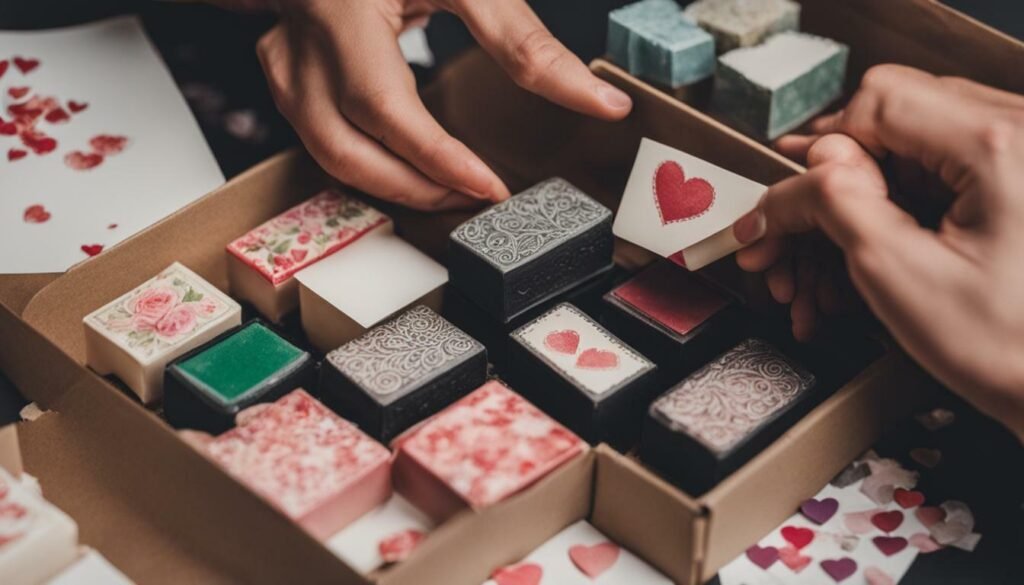
Stamping Cards as a Creative Outlet
Are you looking for a fun and fulfilling creative outlet? Stamping cards may be just the thing for you! Not only does it allow you to express your emotions and showcase your unique style, but it also provides a relaxing and therapeutic activity to unwind after a long day.
Stamping your own cards allows you to create something personalized and one-of-a-kind. You can choose the colors, designs, and themes that speak to you and reflect your own personality and style. It’s a great way to show your loved ones how much you care by creating a card that is tailor-made just for them.
Moreover, stamping cards can be a social activity as well. Gather some friends or family members and spend an afternoon stamping together. It’s a great way to bond, share ideas, and have fun while creating something beautiful.
Stamping cards can also be a way to destress and clear your mind. Focusing on the intricate designs and colors can help you forget about the stresses of daily life and enter a state of relaxation. It’s almost like meditation in action!
Whether you’re a beginner or a seasoned pro, stamping cards can be a rewarding and enjoyable hobby. So go ahead, grab some paper, ink, and stamps, and let your creative juices flow!
FAQ
Why should I stamp my own cards?
Stamping your own cards allows you to customize designs, add a personal touch, and save money on store-bought cards.
What are the essential tools for stamping cards?
The must-have tools for stamping cards include ink pads, stamping blocks, and various types of stamps.
What are some different stamping techniques I can try?
You can explore stamping techniques such as heat embossing, masking, and resist stamping to add depth and texture to your cards.
How do I choose the right cardstock for stamping?
Consider factors such as weight, texture, and color when selecting cardstock for stamping to achieve professional-looking results.
Can I design my own stamp patterns?
Yes, you can unleash your creativity by designing your own stamp patterns using materials like foam, rubber, or by carving your own designs.
How can I create stamped backgrounds for my cards?
You can create stunning stamped backgrounds by using techniques like repeated patterns, blending colors, and masking.
Can I combine stamping with hand lettering?
Absolutely! Combining stamping with hand lettering adds a personal and artistic touch to your cards, making them truly one-of-a-kind.
What are some embellishments I can use to enhance my stamped designs?
You can explore embellishments like sequins, ribbons, and gems to add depth and enhance the stamped designs on your cards.
How can I ensure clean and crisp stamping?
Follow essential tips such as applying the right amount of pressure, using proper inking techniques, and cleaning your stamps thoroughly for clean and crisp stamping.
Can I create interactive stamping cards?
Yes, you can bring your cards to life with interactive elements like pop-ups, sliders, or shakers using stamping techniques that make your cards fun and engaging.
How can I incorporate stamped images into die-cut designs?
You can combine stamped images with die-cut designs to create unique and intricate card designs that showcase your stamping skills.
Are there any ideas for creating stamped cards for special occasions?
Yes, you can find inspiration for creating stamped cards for birthdays, anniversaries, weddings, or holidays, each tailored to suit the event.
How can I add a personal touch to my stamped cards?
You can add a personal touch to your stamped cards by incorporating photographs, handwritten messages, or meaningful quotes.
Are there any DIY stamping card kits for beginners?
Yes, there are ready-made DIY stamping card kits available that are perfect for beginners. These kits provide all the necessary materials and step-by-step instructions to get started.
How can stamping cards be a creative outlet?
Stamping cards can be a therapeutic and fulfilling creative outlet, allowing you to express your emotions and showcase your unique style.
